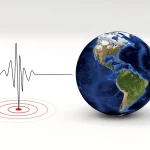August the 20th, 2024 – The air on the otherwise gorgeous Vis island is polluted at the moment. In fact, it has the worst air quality of anywhere in Croatia. But why?
As Poslovni Dnevnik writes, according to current data, Vis island currently has the most polluted air in all of Croatia. The island has been placed in the red, which indicates extremely poor air quality. Koprivnica, Osijek and Zagreb, all of which are in continental Croatia and tend to struggle with air pollution, have moderate quality, as reported by Morski.
associations with the summer season

Given that ozone (O3) is produced by photochemical reactions, excessive O3 pollution is associated with the summer season when insolation is at its strongest. The higher the air temperatures and the longer the heat lasts, the greater the probability of the occurrence of the episodic conditions of O3.
Particulate matter, nitrogen dioxide and ground-level ozone are the air pollutants responsible for enormous amounts of health issues. The World Health Organisation defines particulate matter (PM), nitrogen dioxide (NO2), sulfur dioxide (SO2) and ground-level ozone (O3) as pollutants in the air with the most harmful effect on human health of all.
In Earth’s upper atmosphere (more precisely the stratosphere) it appears as a natural chemical compound that protects our plant from harmful radiation. In the lower layers of the atmosphere (the troposphere) it appears as an artificial chemical compound and is called ground-level ozone. Ground-level ozone is formed primarily from photochemical reactions occurring between the two main groups of air pollutants – volatile organic compounds (VOCs) and nitrogen oxides (NOx).
could vis island’s polluted air cause health issues?

Unlike stratospheric ozone, ground-level ozone is undesirable. Due to its strong oxidising properties on the Earth’s surface, ozone strongly reacts with other molecules, thus oxidising almost all metals and breaking down unsaturated organic compounds and dyes.
The harmfulness of ground-level ozone is also manifested in the destruction of crop yields and forests in plants. In humans, it causes irritation of the mucous membranes of the eyes, throat, nose and respiratory tract.
Symptoms of exposure to ground-level ozone include: coughing, general throat irritation, pain when taking a deep breath, chest discomfort, and headaches often accompanied by nausea. This is especially true for children, people with lung diseases, the elderly, and people who perform various jobs outdoors, as they may be particularly sensitive to ground-level ozone.











